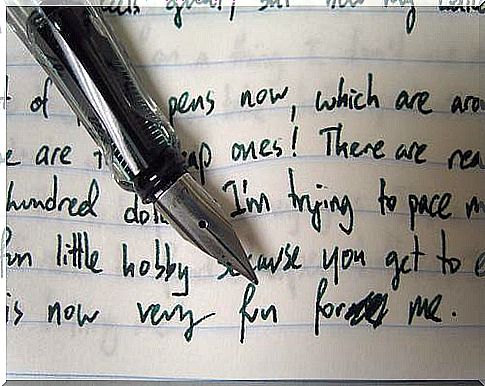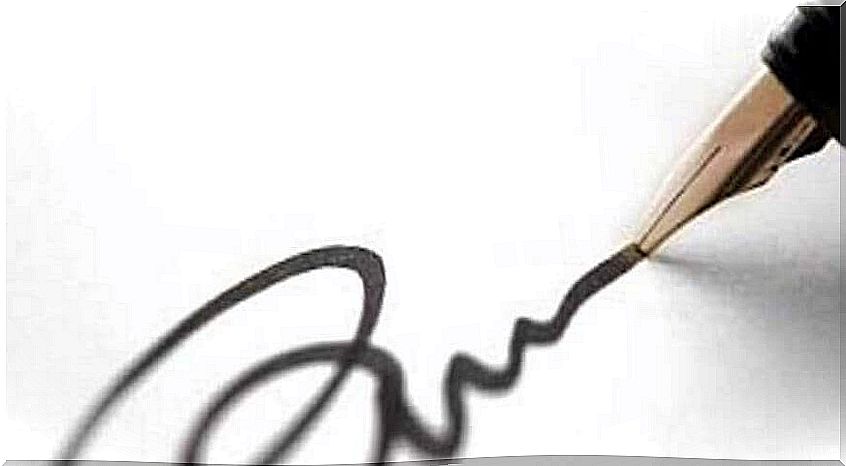Graphology, Or What Your Writing Says About You

Graphology is a technique that studies the psychological characteristics of people through the shape and layout of their handwriting. We analyze spontaneous handwriting extracts and / or individual signatures. This can give experts information about their personality traits or their emotional state as they write. This analysis technique is also used to authenticate the identity of the person who wrote.
We all write in a special way. Our handwriting is recognizable among those of others. There are characteristics that are real. It is a kind of “fingerprint”, since it is almost impossible that in a natural way we can repeat exactly the same characteristics between two individuals.
Even when we want to knowingly modify it, it is very difficult to obscure the lines that come naturally to us. Therefore, graphology is a very useful tool in some forensic investigations to determine the identity of different criminals. In addition, certain traits of our personality stand out from writing that can be valued by experts.
In the analysis of the traces of writing, there are concrete characteristics on which graphologists emphasize. These are the 8 traits that they particularly trust and which give several information:
- Size: the image we have of ourselves and our self-esteem.
- Inclination of letters: affectivity, initiative, capacity for reflection and tendency to have recourse to intuition or logic.
- Form: cultural level, intellectual level, aesthetic sense of a person.
- Pressure: vitality and health.
- Speed: mental agility, intelligence quotient.
- Direction of lines: emotional state.
- Link or untie letters: communication, affectivity, way of relating to others.
- Points on the i’s: attention and precision.
By careful analysis of all these characteristics of handwriting, graphologists are able to develop a profile. In addition, they take into account other aspects such as the use of capitals, margins and signature.
The analysis of personality traits is based on projective techniques which assume that writing reveals unconscious aspects of behavior. Taking into account the 5 major personality traits model, different types of writing can indicate one personality trait or another.
- Openness to new experiences (Factor O): this personality trait rhymes with creativity and flexibility. Disorganized and disproportionate writing with deep, rapid, upward pressure can lean towards this trait.
- Responsibility (Factor C): This personality trait indicates a high degree of commitment, a disciplined, punctual and thoughtful person. The writing that can put in the way of this personality trait is clear, proportionate, organized and with medium-small letters.
- Extraversion / introversion (Factor E): People with a high degree of extroversion are sociable, talkative and assertive. The writing that characterizes them is clear, large, ascending and linked. On the contrary, the handwriting of introverted people is generally collected, small, with simple typography, slow, and with light pressure.
- Friendliness (Factor A): a respectful, tolerant and calm person. The writing that leads one to think of this trait is clear, legible, organized, large, of medium pressure, and slightly upward.
- Emotional Stability (Factor N): This personality trait informs about dealing with problems calmly and resolutely. The writing that can indicate emotional stability is organized, neat, angular, slow, of strong pressure, rectilinear and with laps of cohesion.
However, be aware that even if there are guidelines that can lead to an analysis, only an expert can draw conclusions.

The signature is personal and inimitable. It contains characteristics which are very difficult to copy exactly. Our signature is “the seal of our identity”, and according to experts, it can also provide a lot of information about our personality. The fact of not choosing our writing in a 100% conscious way can contribute to that it does not contain elements which inform about our way of being.
One of the important characteristics when analyzing a signature is to see if the name is readable or not. If it can be read with complete clarity, it may mean that the person is someone who is clear on their goals, responsible, with strong self-esteem and balanced. If the signature is difficult to read, it may indicate that the person is anxious, impatient and shirking responsibility.

Signatures where nothing can be read at all indicate that these are people with difficulty admitting authority and who are confused in their actions. The speed at which the signing is performed also matters a lot . If done quickly, it can reflect the personality of someone who doesn’t like to wait, who is impatient, who likes to finish things quickly. Slow writing would be more characteristic of a thoughtful person.
We can attribute to this discipline several used in different professional fields. In the field of psychology, it is a tool which, coupled with others, can help to develop the psychological profile of the patient. In physicians, graphology can be used to rapidly detect neurological pathologies such as Alzheimer’s.
It can also be useful in the educational field ; indeed, we can observe, through the analysis of writing, learning disorders such as dysgraphia. In the legal field, it can be of great use to analyze the messages left by people who have committed suicide, to determine the identity of a criminal, or to observe if there are any characteristics. such as violence among suspects.
We use graphology in an increasingly natural way. Judges increasingly ask for the intervention of experts to observe certain personality traits or tendencies to aggression and violence.









